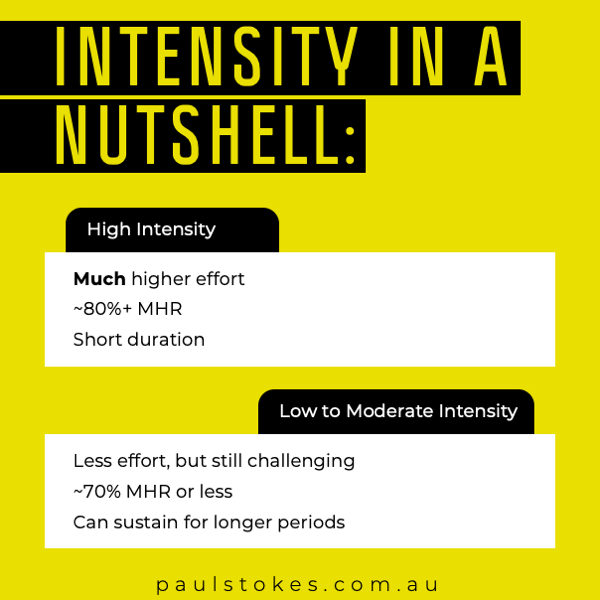Essentially, EPOC is an acronym - it stands for Excess Post-exercise Oxygen Consumption. But what the heck does that mean?! Basically, it's how your body continues to use more oxygen than normal after a strenuous workout.
To understand EPOC, we need to know a few things
homeostasis
the process that all living things use to actively maintain fairly stable conditions necessary for survival
all the chemical processes going on continuously inside your body that allow life and normal functioning.
metabolism
You see, exercise (despite its MANY benefits) is actually stressful for the body.
Think about it. With strenuous activity, your core temperature increases. Your body sweats in an attempt to cool you down.
Your heart rate increases and your breathing gets faster. Essentially, your muscles aren't getting enough blood and oxygen. They're stressed. Your body does what it can to get more oxygen to them so they can perform what you're asking.
Then there's the effect on the muscles themselves. There'll be microscopic damage occurring, which is essentially the stimulus for them to grow stronger.
So why is EPOC important if the stress occurs during the workout?
Well, even when you finish your session and you stop moving, your metabolism is still 'revved up.'
It takes time for your body to settle back to normal, i.e. homeostasis to occur. Also, your body needs to repair any damage from the workout.
EPOC used to be thought of as an oxygen debt that had to be paid back. Your body requires energy (in the form of calories) to do so. However, this concept is a little overly simplistic.
What we know is that EPOC occurs on a cellular level. As our metabolism is 'disturbed' as the intensity and duration of our exercise session increases.
Q: I heard EPOC burns a lot of calories for 24-36 hours afterwards, isn't that the case?
A: The calories burned during your exercise session will always be more than any 'afterburn.'
Also, bear in mind that calorie expenditures shown on exercise equipment or heart-rate monitors are estimates. Therefore, they have the potential for large margins of error.
In addition, research shows that the energy expended during EPOC is about 6-15% of the actual exercise session. However, this heavily depends on your age, gender, and training status, along with other factors.
Q: Is high-intensity interval training (HIIT) better than steady-state cardio?
A: Better for WHO? Training is always VERY individual. As such, you need to structure it around the goals you have.
From a time-saving standpoint, high-intensity interval training can produce similar or better results in cardiovascular fitness as compared to steady-state cardio at lower intensities.
However, when comparing the same duration lower or moderate-intensity exercise to high-intensity exercise the caloric expenditure is nearly identical. Also, keep in mind the previously mentioned variables that influence the outcome.
So basically:
Higher-Intensity = MUCH higher effort. You're working at around 80+% of your maximum heart rate. As a result, your sessions will be shorter in duration.
Lower to moderate intensity = less effort but challenging. You can perform these workouts for longer periods. Usually, you're working at around 70% or less of your maximum heart rate.

Can I maximise EPOC and make my workouts more effective?
Keep in mind that you must consider both exercise intensity and duration. These are both key variables we can control to maximise our fitness sessions.
Doing true high-intensity exercise is HARD on the body. (Spoiler alert: what you think of as HIIT might not be)
It's recommended that you train at high-intensity just 1-3 times per week.
Less is more. Recovery from these sessions is crucial, and you need to plan and account for this.
Conversely, you can train more often at a low-to-moderate intensity. You'll need relatively less recovery after these type of sessions.
Key takeaways when it comes to EPOC and exercise sessions:
EPOC is not as vital or important as many would have you to believe. At the end of the day, it may help you burn an additional 30-80 calories. Not much in the grand scheme of things.

References and further reading:
- LaForgia et al. Effects of exercise intensity and duration on the excess post-exercise oxygen consumption. J Sports Sci. 2006 24(12):1247-64
- Helgerud, Jan et al. Aerobic high-intensity intervals improve V02max more than moderate training. Medicine and science in sports and exercise vol. 39,4 (2007): 665-71. doi:10.1249/mss.0b013e3180304570
